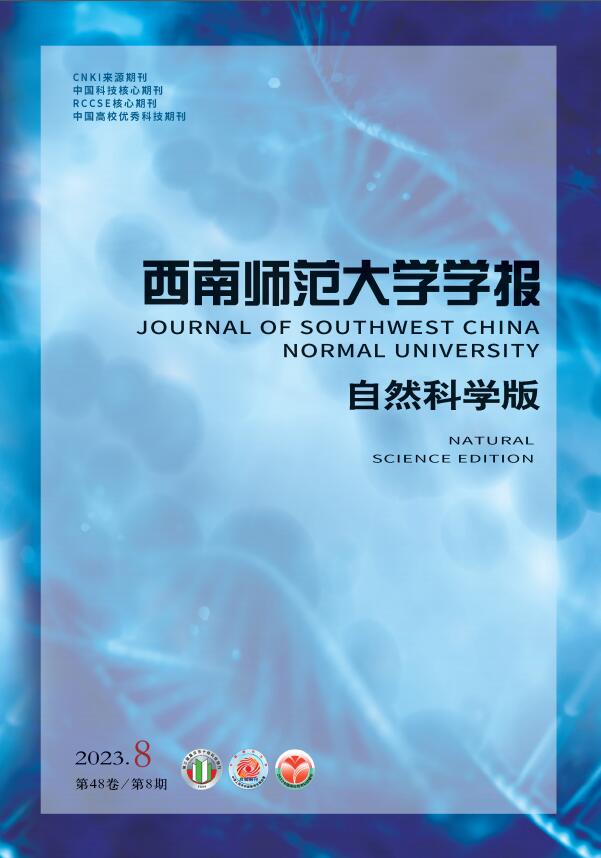-
肝脏是人体重要器官之一,其感染可引起不同的疾病. 乙型肝炎是引起肝脏炎症的传染病之一. 乙型肝炎的感染分为乙型肝炎急性感染和乙型肝炎慢性感染两个阶段. 临床上,感染持续超过6个月就会诊断为慢性感染者,所以急性感染者的治疗时间窗口相对很短,并且急性期患者通常是在医院治疗或者通过自我防护,传播途径相对较少从而忽略急性感染者的传播[1]. 乙型肝炎慢性感染是指当乙肝病毒在体内停留很长时间,并发展成严重的健康问题时发生的疾病,可以导致肝瘢痕、肝功能衰竭,也可能发展为肝癌[1-6]. 疾病发生率是数学建模邻域的一个关键概念和重要角色. 双线性发生率在各种流行病问题中广泛使用. 文献[7]首次引入了饱和发生率,这是双线性发生率的广义形式,这种发生率比双线性发生率更敏感,特别是在血液传播和性传播疾病的情况下,因为饱和发生率包含了有毒个体的协同改变和群集影响,并通过指示适当的参数抑制了相互作用率的无界性,在许多流行病问题中被广泛使用[8-13].
为了研究具有饱和发生率的急慢性乙肝传染病模型,本文将人群分为4类:易感者(人数设为S)、急性乙肝感染患者(人数设为I1)、慢性乙肝感染患者(人数设为I2)、康复者(人数设为R). 假设不存在乙肝疫苗接种失败,且免疫效力不会消减,急性感染者可以转移为慢性感染者. 因为在存在大量感染者的情况下,人们可能会减少每单位时间的接触人数,因此为了体现传染病传播过程中的心理效应,我们选用饱和发生率函数
$\frac{\beta S I_2}{1+\varepsilon S}$ . 考虑到急性乙肝会由免疫系统清除,所以在模型中不考虑急性乙肝造成的死亡. 因此,构建如下动力学模型:初始条件为
其中A代表出生率,β是从易感到感染急性乙型肝炎的转移率,a是从急性期到感染慢性肝炎的转移率,γ1是从急性期到恢复期的恢复率,γ2是从慢性期到恢复期的恢复率,d是自然发生的死亡率,也称为自然死亡率,d1是由慢性乙型肝炎引起的死亡率,v代表乙型肝炎疫苗接种率.
HTML
-
定理1 在满足初始条件(2)的情况下,模型(1)的解始终非负,并最终有界.
证 若存在最小时间t1>0,使得S(t1)=0,代入系统(1)的第一个方程,得到
则存在充分小的η>0,使得在区间(t1-η,t1)上有S(t) < 0,与S(t)在区间(0,t1)上大于0矛盾. 接下来证明对t>0,有I1(t)≥0,I2(t)≥0,有下面3种情况:
(ⅰ) 若I1(0)=I2(0)=0,显然t>0时,有I1(t)=I2(t)=0.
(ⅱ) 若I1(0)>0,I2(0)>0,假设存在最小时间t2>0,使得I1(t2)=0或I2(t2)=0. 如果I1(t2)=I2(t2)=0,有
得出矛盾. 所以I1(t2)=I2(t2)=0不成立. 不妨设I1(t2)>0且I2(t2)=0,有
所以存在t2的左邻域(t2-δ,t2),使得I2(t) < 0,t∈(t2-δ,t2),矛盾,因此假设不成立. 同理I1(t2)=0,I2(t2)>0的情况也不成立.
(ⅲ) 若I1(0),I2(0)中有一个大于0,另一个等于0. 不妨设I1(0)=0,I2(0)>0,有
所以存在0的邻域(0,δ1),使得I1(t)>0,I2(t)>0在(0,δ1)成立,不妨设t3∈(0,δ1),则I1(t3)>0,I2(t3)>0. 用(ⅱ)的方法可知I1(t)>0,I2(t)>0在t>t3时成立. 也可证明当I1(0)>0,I2(0)=0时,结论也成立. 同理可以证明对所有t>0,有R(t)>0. 综上所述,系统(1)的解始终非负.
令
得到
所以
定理1得证.
设集合
为模型(1)的一个正不变集,本文将在Ω上考虑模型(1)的动力学性质.
-
首先,容易得到模型(1)存在唯一的无病平衡点E0(S0,0,0,R0):
利用文献[13]的方法,我们得到模型(1)的基本再生数为
接下来,计算模型(1)的正平衡点,可得到下列方程组:
解之可得正平衡点E*=(S*,I1*,I2*,R*),其中
定理2 当
$\mathscr{R}_0$ < 1时,模型(1)的无病平衡点E0是局部渐进稳定的;当$\mathscr{R}_0$ >1时,模型(1)的正平衡点E*是局部渐进稳定的.证 为了证明结果,我们计算得到模型(1)的雅可比矩阵为
在E0点处的雅可比矩阵为
对应的特征多项式为
x1,x2为矩阵
的特征根. 现在只要证明Q的迹是负的,而Q的行列式是正的就足够了.
根据Routh-Hurwitz准则[14],我们可以知道当
$\mathscr{R}_0$ < 1时,无病平衡点局部渐进稳定;当$\mathscr{R}_0$ >1时,无病平衡点不稳定.在E*点处的雅可比矩阵为
对应的特征多项式为
y1,y2,y3为矩阵
的特征根. 矩阵W的特征多项式为
其中
当
$\mathscr{R}_0$ >1时,有bi>0(i=1,2,3)和b1b2-b3>0. 根据Routh-Hurwitz准则[14],我们可以知道当$\mathscr{R}_0$ >1时,正平衡点局部渐进稳定.定理3 当
$\mathscr{R}_0$ ≤1时,模型(1)的无病平衡点E0全局渐进稳定;当$\mathscr{R}_0$ >1时,模型(1)的正平衡点E*全局渐进稳定.证 为了证明模型(1)在E0处的全局稳定性,记
$f(S)=\frac{\beta S}{1+\varepsilon S}$ ,构造Lyapunov函数沿着模型(1)轨线的全导数为
由于f(S)严格单调递增,
$\left(1-\frac{f\left(S_0\right)}{f(S)}\right)\left(1-\frac{S}{S_0}\right) \leqslant 0$ . 所以,当$\mathscr{R}_0$ ≤1时,$\frac{\mathrm{d} \varPhi}{\mathrm{d} t} \leqslant 0$ . 当且仅当S=S0,I1=0,I2=0时才有$\frac{\mathrm{d} \varPhi}{\mathrm{d} t}=0$ . 根据Lyapunov-LaSalle不变原理[15]可知,当$\mathscr{R}_0$ < 1时,无病平衡点E0全局渐进稳定.为了证明模型(1)在E*处的全局稳定性,构造Lyapunov函数
沿着模型(1)轨线的全导数为
由于f(S)严格单调递增,
$\left(1-\frac{f\left(S^*\right)}{f(S)}\right)\left(1-\frac{S}{S^*}\right) \leqslant 0$ . 由算术平均数和几何平均数的关系可知因此
$\frac{\mathrm{d} \varPsi}{\mathrm{d} t}$ ≤0. 当且仅当S=S*,I1=I1*,I2=I2*时才有$\frac{\mathrm{d} \varPsi}{\mathrm{d} t}$ =0. 只有当$\mathscr{R}_0$ >1时,(S*,I1*,I2*,R*)才有意义. 因此,根据Lyapunov-LaSalle不变原理[15]可知,当$\mathscr{R}_0$ >1时,正平衡点E*全局渐进稳定.
-
本文主要研究了具有饱和发生率的急慢性乙肝传染病模型的动力学分析. 在模型中加入急性感染类和慢性感染类的基础上引入饱和发生率,这种发生率比双线性发生率更一般化,更加现实. 在建立模型后,我们找到基本再生数
$\mathscr{R}_0$ . 与流行病学模型一样,该模型有两个稳态,感染稳态和未感染稳态. 证明了当$\mathscr{R}_0$ < 1时,无病平衡点是局部和全局渐进稳定的;当$\mathscr{R}_0$ >1时,正平衡点是局部和全局渐进稳定的. 根据本文具体的饱和发病率传染病模型的计算证明,我们完全可以将这一类饱和发生率函数拓展成一般疾病发生率函数,使得模型构建更加合理. 另外,本文只是说明该饱和发生率在这种模型的条件下是理论成立的,在未来的研究中我们可以根据该模型的部分参数或者条件(例如:隔离感染者和未感染者,增加或减少乙肝疫苗的接种率等)制定控制策略来保证可以最大程度减少急性感染者和慢性感染者的数量.






 DownLoad:
DownLoad: